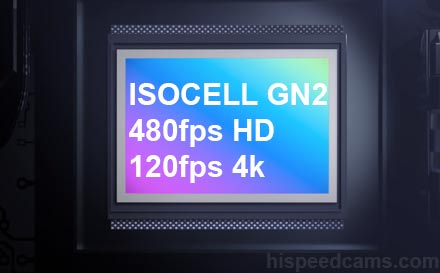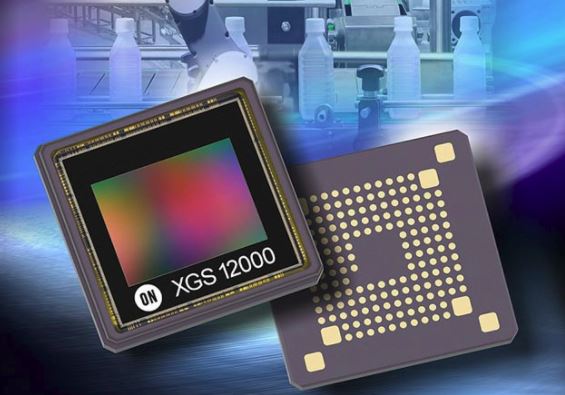On Semiconductor has launched two new 4k ready CMOS global shutter sensors with new technology for reduced noise and improved image quality. The parts are geared to surveillance, automotive, consumer devices and industrial applications. Both sensors are able to do high frame rates at 4k at full resolution.
The XGS 8000 is an 8.8 Mp (4096 x 2160) 4k / UHD resolution Global Shutter CMOS image sensor in 1/1.1 inch optical format capable of 120fps at full 8.8MP resolution. This first one geared for smaller devices. The XGS 12000 is a 12.6 Mp (4096 x 3072) CMOS image sensor in 1″ inch format, supporting up to 90 fps readout at full 12.6MP resolution. This sensor is better for higher resolution solutions.
XGS 8000: CMOS Image Sensor, Global Shutter, 8.8 Mp (4k / UHD resolution):
The XGS 8000 is a 8.8 Mp (4096 x 2160) 4k / UHD resolution Global Shutter CMOS image sensor in 1/1.1 inch optical format, supporting up to 120 frame per second readout at full resolution.
The device provides high resolution, global shutter imaging with high readout speed for industrial imaging customers. A compact package design and low power footprint make the device compatible with a 29 x 29 mm2 camera footprint. Two-speed grades are available to match device output to key computer interfaces and application requirements.
The XGS 8000 is a member of the X-Class image sensor platform, which allows one camera design to support not only multiple resolutions but also different pixel designs with only minor modifications, simplifying and speeding time to market for new camera designs.
The XGS 8000 is available in a 163-pin LGA package in both monochrome and Bayer color configurations.
| Features |
|
Benefits |
- Member of X-Class platform
|
|
- Allows one camera design to support multiple resolutions and multiple pixel designs
|
- Advanced 3.2 µm global shutter pixel
|
|
- High resolution with high image quality and uniformity
|
|
|
|
- Reduced power and thermal footprints
|
|
|
|
- Compatible with 29 x 29 mm2 camera design
|
|
|
|
- Match to key computer interface and application requirements
|
| Applications |
|
End Products |
|
|
|
- Broadcast cameras
- Industrial cameras and systems
- Security cameras and systems
- Inspection system (food, bottles, recycling labels, etc.)
|
XGS 12000: CMOS Image Sensor, Global Shutter, 12.6 Mp:
The XGS 12000 is a 12.6 Mp (4096 x 3072) CMOS image sensor in 1 inch optical format, supporting up to 90 frame per second readout at full resolution.
The device provides high resolution, global shutter imaging with high readout speed for industrial imaging customers. A compact package design and low power footprint make the device compatible with a 29 x 29 mm2 camera footprint. Two speed grades are available to match device output to key computer interfaces and application requirements.
The XGS 12000 is a member of the X-Class image sensor platform, which allows one camera design to support not only multiple resolutions but also different pixel designs with only minor modifications, simplifying and speeding time to market for new camera designs.
The XGS 12000 is available in a 163-pin LGA package in both monochrome and Bayer color configurations.
| Features |
|
Benefits |
- Member of X-Class platform
|
|
- Allows one camera design to support multiple resolutions and multiple pixel designs
|
- Advanced 3.2 µm global shutter pixel
|
|
- High resolution with high image quality and uniformity
|
|
|
|
- Reduced power and thermal footprints
|
|
|
|
- Compatible with 29 x 29 mm2 camera design
|
|
|
|
- Match to key computer interface and application requirements
|
| Applications |
|
End Products |
|
|
|
- Industrial cameras and systems
- Inspection system (food, bottles, recycling labels, etc.)
- Security cameras and systems
|
HSC Take on these new sensors:
-1,061,683,200 pixels/second for the XGS 8000
- 512fps @ 1080p bandwidth
- 1,152fps @ 720p bandwidth
-1,132,462,080 pixels/second for the XGS 12000
- 546fps @ 1080p bandwidth
- 1,228fps @ 720p bandwidth
These sensors are geared to industrial applications and surveillance cameras. That doesn’t mean that slow-motion cameras are out of the running for using these parts. There are however better options out there for higher frame rates as these sensors while fast offer pretty mediocre frame rates in windowed mode for 1080p and 720p recording. The 120fps 4k is nice on the XGS 8000 but as more cameras adopt the format it will be just within spec. It seems these new sensors are better used in sorter machines and production lines.
The 3.2 µm pixel size on both of these is adequate but still small compared the sensor 10 µm in say an edgertronic SC2X camera which is excellent in low light levels and offers better frame rates.
We expect to see new sensors used in a variety of cameras at NAB 2018 in early April. Stay tuned. – HSC
More info on both sensors at the On Semiconductor website: http://www.onsemi.com/PowerSolutions/newsItem.do?article=4043


